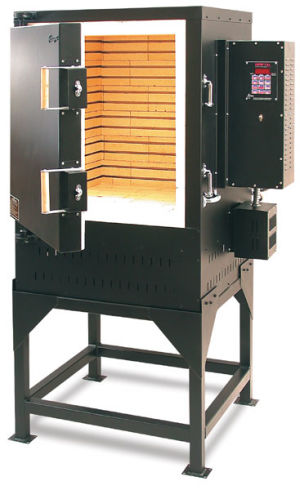If you’ve been taking pottery classes for a while and enjoying making your ceramics, perhaps it is high time you buy a kiln, so you can have more fun creating at home.
Investing in a good kiln can help you take your hobby to the next level. Who knows, you might even decide to open a home pottery studio?
With so many options online, though, which pottery kiln should you buy?
In this article, we will discuss the different types of pottery kilns, as well as the things you need to consider before getting one. Afterward, we will share with you the five best pottery kilns of 2021, and talk about their features, uses, and performance.
Read on to find out which pottery kiln is for you.
Types of Pottery Kilns
There are many different types of pottery kilns based on various criteria.
There are traditional ones such as wood-burning kilns, igloo-shaped brick kilns, and climbing kins. There are also contemporary ones, such as electric kilns used by modern-day potters.
There are also different types of kilns based on gas flames and heat travel, namely updraft kilns, and downdraft kilns.
Today, we will talk about the types of pottery kilns according to firing temperature.
Ceramic Kilns
Ceramic Kilns typically only have heating elements in their sidewalls. An element refers to a piece of wire that resists the passage of electricity – the resistance causes electrical fiction causing the wire to heat up.
Ceramic Kilns are fired at temperatures between 1828°F and 2345°F (998°C and 1285°C).
Glass Kilns
Glass Kilns use natural gas or propane for firing. It consists of a chamber insulated with fire bricks.
Glass kilns are usually fired below 1700°F (927°C).
Metal Clay
Metal clay kilns tend to be smaller table-top models and are typically used for firing small jewelry pieces. They are generally fired up to around 1800°F (982°C).
What are the factors to consider when buying a pottery kiln?
Before purchasing a kiln, you will need to consider the following:
Available power supply
You can’t just order one online and plug it into an outlet. You’ll need to match the kiln’s requirements to your available power supply.
If your voltage supply is higher than the number of volts the kiln needs, it can affect the life of the elements and switches. Similarly, if your voltage supply is lower than the kiln requirements, it may not reach its maximum temperature during firing.
To make sure you can safely use a kiln at home, we suggest you hire a licensed electrician to help you install any breaker boxes, outlets, or wirings.
Budget
Budget is another important factor to consider when buying a kiln.
Pottery kiln costs usually range from a couple hundred to several thousand dollars, depending on size, design, and function.
Kiln size, shape, and temperature
The type of pottery kiln you will need to buy will depend largely on what wares you intend to fire in it.
If you want to create small ceramics occasionally, you can start with a 9” x 11” kiln. However, if you want to design tall pots or a bulk of bowls and plates, you can go with a 23” x 27” kiln.
The ideal production size, if you plan to sell your creations, is 29” x 27”.
You will also want to consider the shape of the kiln. They are usually round, oval, or rectangular, while some may even be eight or 10-sided.
Choosing the right kiln shape can help improve efficiency. Not only can some kilns fit more ceramics, but some also heat and cool faster than others, hence affecting the firing cycle.
The kiln temperature will also impact the type of kiln you need to purchase. It is best to buy a kiln with a maximum temperature that exceeds the temperature range your pieces require.
Ceramic kilns are suitable for low-fire ceramics, while glass kilns are best for glass fusing, slumping, and enameling.
5 Best Pottery Kilns
Here are the five best pottery kilns for new and seasoned artists:
Jen-Ken AF3C 11/9 Ceramic Kiln
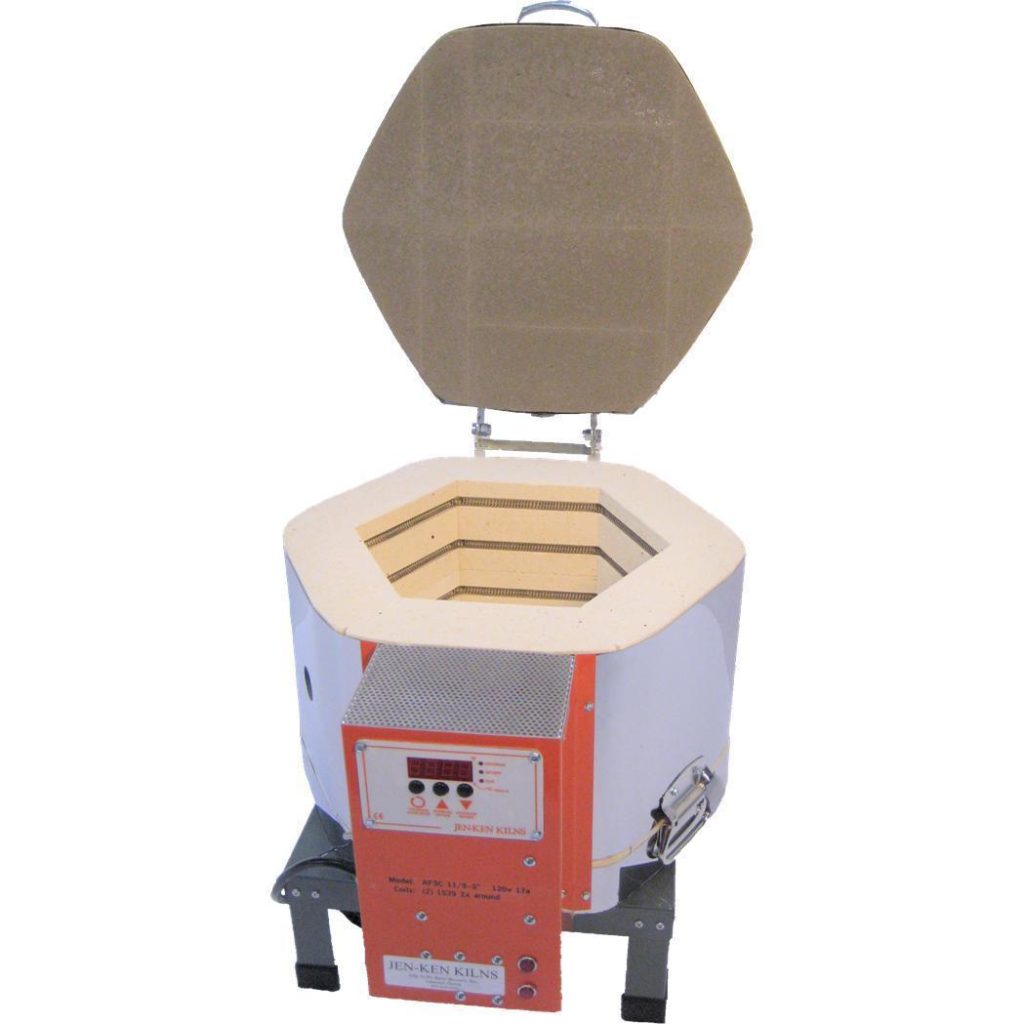
The Jen-Ken AF3C 11/9 is a top-load pottery kiln that is ideal for low-fire ceramics. It is also one of the best choices for new hobbyists as it doesn’t require much space and electrical modifications.
Its internal dimensions are 11” x 9”, which makes it great for small pieces and test firings.
It comes with a no-frills, auto-fire controller that does a good job. Its maximum temperature is at 2100°F (1149°C) and can be used for glass fusing and slumping.
If you are on a budget and would like to practice making and firing smaller projects first, then the Jen-Ken AF3C 11/9 is the best kiln for you.
Jen-Ken AFP3 15/6 Glass Kiln
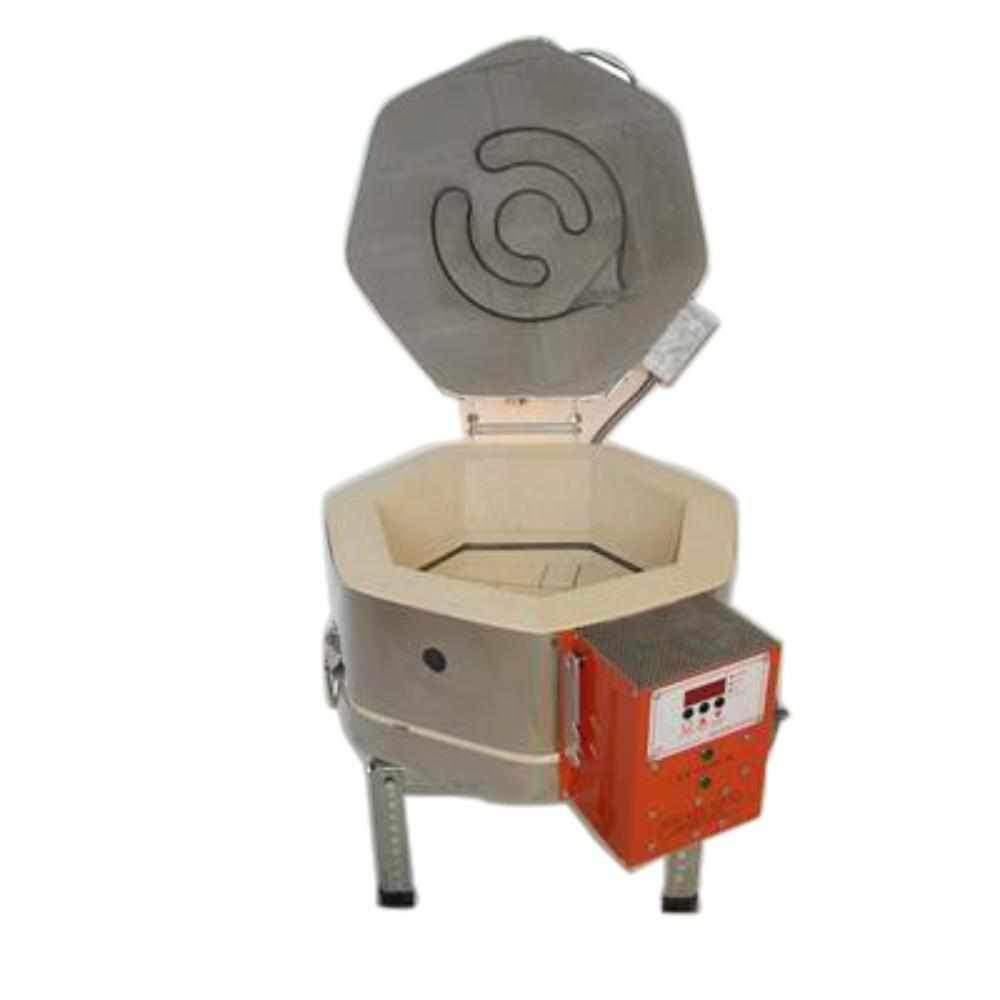
The Jen-Ken AFP3 15/6 Glass Kiln is another great choice for pottery beginners. It is space-saving but not too small, it is cheap, and it has low energy requirements.
Its dimensions are 15” x 6”, making it perfect for test firing, as well as creating beads and small jewelry.
Its maximum temperature is 1700°F (927°C), and it can accommodate high-temperature glass projects, such as boiling.
It doesn’t require any electrical adjustments, which means it is ready for home use after a quick setup. It also already comes with a kiln shelf, kiln wash, posts, stand, and a manual controller.
At under a thousand bucks, the Jen-Ken AFP3 offers good value for money.
Evenheat Ceramic Kiln – High Fire 1210B
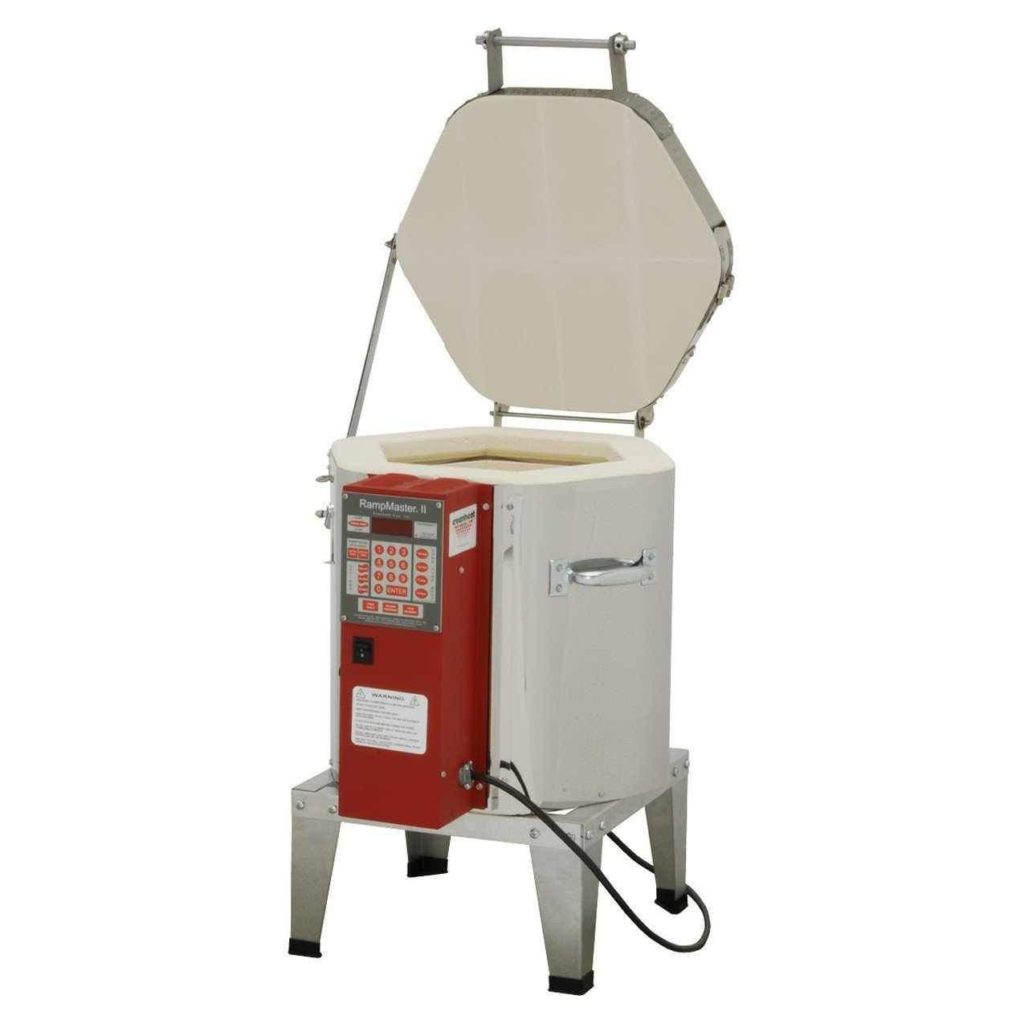
The third and final reasonably priced kiln on our list is the Evenheat Ceramic Kiln.
Its dimensions are 11.25” x 13.5”. It weighs 70 pounds and is compact and easy to move around.
The Evenheat Ceramic Kiln is a good, affordable pick for more experienced potters and ceramic artists as it offers more control and has greater capability than the Jen-Ken AFP3. It uses the traditional firing method and has a manual controller, and it has a good build quality, design, and performance.
Its maximum temperature is 2350°F (1288°C) and is suitable for firing a variety of ceramics, including earthenware and high-fire stoneware.
Olympic Kiln 3027HE
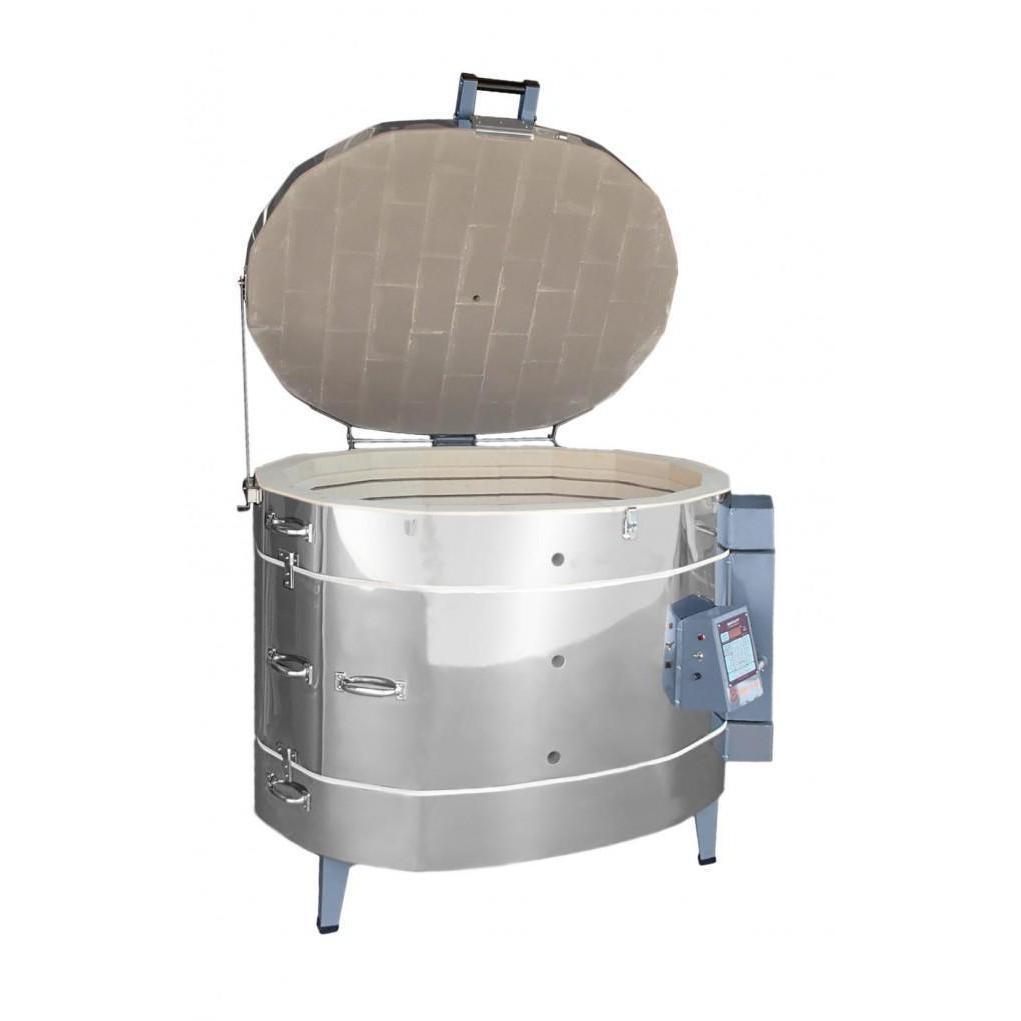
The Olympic Kiln 3027HE is a top-load oval kiln designed for larger ceramic pieces. It is best for pottery with irregular shapes that require a bit more floor space and may not fit in cylindrical or square kilns.
It has three-inch bricks and a two-inch blank brick row in the first section to protect the elements during loading and unloading.
The Olympic Oval Kiln is rated for cone 10. Its maximum temperature is 2350°F (1288°C).
While it is on the higher end of the spectrum, the Olympic Oval Kiln is a good investment for when you need to fire bigger workloads without having to get into commercial production.
Paragon Dragon Front Loading Kiln
The Paragon Dragon Kiln is an industrial furnace designed for pottery studios. It is perfect for fast firings, glass casting, low-fire ceramics, stoneware, and even porcelain.
Its interior is 24” wide, 24” deep, and 27” high. Its walls are 4” thick, and its extra insulation helps save energy and lengthen cooling.
It is rated cone 10 and fires at 2350°F (1288°C).
The Paragon Dragon Front Loading Kiln is also preferred for enameling because pieces are easier to remove at 1450°F (788°C). Using a top-loading kiln for that purpose would be challenging as the heat rises when you open the lid.
Conclusion
A pottery kiln is one of the most essential pieces of equipment you will need as a ceramics artist. It will bring your creations to life and remind you of the hard work you’ve put in the pieces you’ve made.
We hope that this article helps you find the right pottery kiln that suits your needs.


